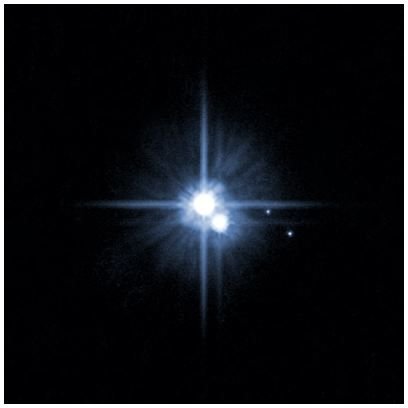Why Pluto is Not a Planet: How the Decision was Made to Call Pluto a Plutoid
Pluto is Now a ‘Plutoid’
Many of us growing up learned that the solar system we live in, the one that has the star known as Sol at the center, had nine planets. We all had to memorize them in order, from Mercury to Pluto. But low and behold, the ninth planet in our system, the smallest and furthest from the sun, Pluto, has been demoted to the status of ‘Dwarf Planet’, or as it has been called since June of 2008, a ‘Plutoid’. But there is a reason behind this and it has to do with two additional celestial bodies that were discovered orbiting the sun.
Discoveries that Led to the New Term
Those two celestial bodies have been named Eris and Ceres. Eris was discovered in 2003 but not truly identified until 2005. It is made up of the same material as Pluto, but it is actually bigger than the former planet, making it the ninth largest object in our solar sytem to orbit the sun. It lies beyond the Kuiper Belt in an area of the solar system known as the ‘scattered disc’. Ceres was discovered in solar system’s main asteroid belt between Mars and Jupiter in 1801. This celestial body within the asteroid belt is the largest there and contains a mass approximately one third of the asteroid belts entire mass. It is also spherical, and astronomers believe that it has a rocky core, icy mantle, and ocean of liquid water.
Scientists, astronomers, and the entire scientific community were thrown into a quandary. Since these two objects were slightly larger and smaller than Pluto astronomers had to decide whether or not they qualified as a planet or something else. Both at one point had been considered asteroids – Eris being beyond the Kuiper Belt which circles the outer edge of our solar system and Ceres being the largest object in the main asteroid belt. What changed this? The fact that Eris and Ceres follow an orbit around the sun. Ceres’ orbit is in between Mars and Jupiter with the rest of the belt and takes 4.6 years to complete. Eris’ orbit crosses Pluto’s, misses Neptune’s and takes 557 years to complete.
Why Pluto isn’t Classified as a Planet
The scientific community had three options on how to deal with Eris, Ceres, and subsequently Pluto. They could boost the number of planets in our solar system to 11. They could simply ignore the fact that Eris and Ceres existed. They could drop the number of planets in the solar system to 8 and reclassify Pluto. This last option is what was chosen and the new classification of ‘dwarf planet’ was given to Pluto and Eris with Ceres remaining a large asteroid even though it had been considered a planet back in the 1800s shortly after its discovery.
They based this decision by qualifying the three celestial bodies based on the definition of a planet. The three criteria that had to be met were as follows:
1. Does it orbit the sun? Pluto and the others clearly orbit the sun.
2. Does it have enough gravity to pull itself in a spheroid? Pluto is spherical in shape.
3. Does it ‘clear the neighbourhood’ of its orbit? Pluto does not.
Number 3’s question is clarified by stating that as planets develop, they either pull smaller masses into its orbit consuming them or their gravity slings them away from the planet as it forms. They become the dominant gravitational body in their orbit. Ceres does not meet criteria number three because of the asteroids that are in orbit with it. With Eris’ orbit being so close to Neptune’s and crossing Pluto’s, it does not have a clean orbit of it’s own. Pluto does not meet the criteria of the planet definition for the same reason because Eris crosses it’s path. When this happens, the celestial body becomes a classified as a ‘dwarf planet’. As long as there are other objects sharing Pluto’s, Eris’s and Ceres’ – orbits, they will never be given full planet status.
Image of Pluto and it’s Moons, Charon, Nix and Hydra
Photo Credit
NASA, ESA, H. Weaver (JHU/APL), A. Stern (SwRI), and the HST Pluto Companion Search Team
